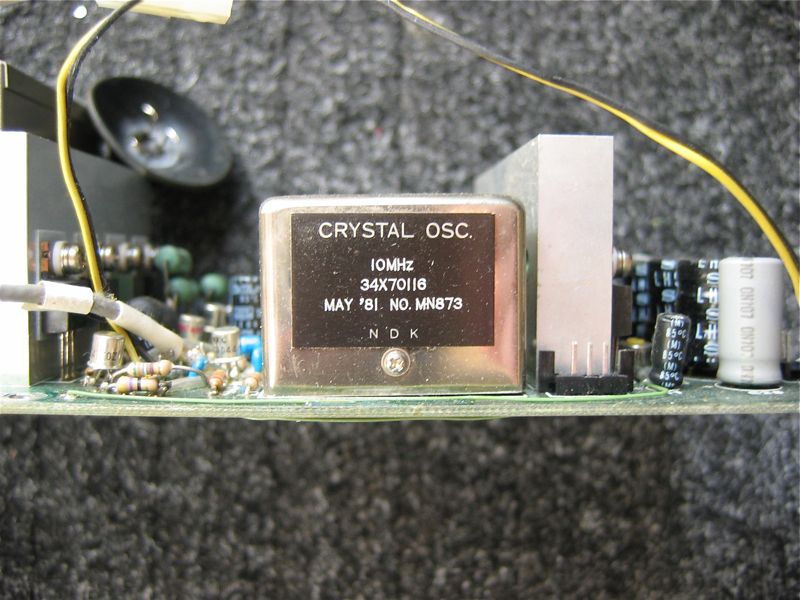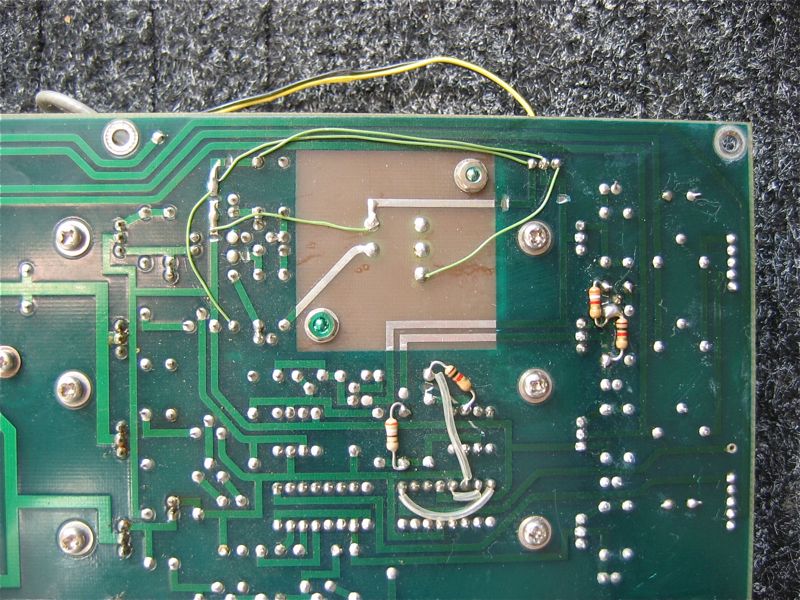I have been doing some TLC to a beautiful Anritsu network/spectrum analyser MS420
A. Replaced tarnished BNC connectors, cleaned up, aligned CRT, etc. It's a great instrument: hand-assembled Japanese quality from mid-80s, 74LS series logic throughout, no ASICs, thick service manual with schematics diagram, repair, alignment and take-apart instructions, etc.

However I have service manual for the second revision (MS420
B) which seemed exactly the same apart from the fact that I could not find the master reference 10MHz clock module.

On MS420B it is in a big massive box in the middle of the rear panel to the left of the fan exhausts:

Then I have taken out CRT driver board for cleaning and - boom! Here it is, just between two CRT coil driver heatsinks - complete with botched re-wiring job.



Who in their right mind would place master reference clock of the instrument that supposed to have 5x10
-8 stability on a hot noisy CRT driver board?! Not that there is no other space in there - the thing weighs 35kg but there is lots of empty space still. It's otherwise beautifully engineered - RF sections are sitting inside milled out cast aluminium slabs, all analogue modules are inside formed aluminium boxes, etc
I reckon the designers
forgot about the master reference clock module and when the panic hit the only available space was on the lowly CRT board so they have hacked in some space there and just crammed the poor fella in. They were in such a rush that still screwed it up and needed to do manual re-wiring on production PCBs.
I had a chuckle!

Cheers
Leo